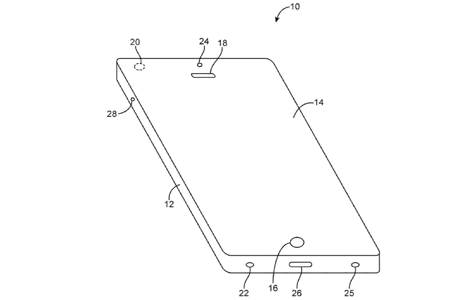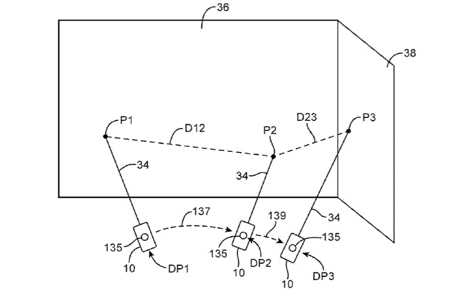
Apple apparently plans to fit a laser scanner into its handsets
Tech giant Apple has filed patents to implant 3D laser scanning technology into its mobile devices.
Using a method whereby the device’s internal sensors, including its internal gyroscope and accelerometer, along with GPS and Wifi, recognise the device’s position, an inbuilt laser and light sensor send out and capture laser point data, forming a 3D point cloud map.
In such a small form factor, it is suggested that the technology could appear in iPhones, iPads and its new Watch.

Leveraging the amount of onboard sensors, the handset would be able to tell where it is while scanning, creating a 3D point cloud
As Apple states in the application, current 3D laser scanners are “bulky pieces of equipment that require batteries or battery packs and must be purchased and transported separately from other equipment and electronic devices”.
Such hardware would also require components such as mapping circuitry for measuring distances, areas, volumes or other properties of objects.
Scaling the technology down to this size would also require thought into data handling – with standard 3D laser scan data point clouds forming huge data files.
While Apple works at whipping this patent into a reality (and figuring out how not to blind every fanboy out there zapping everything under the sun with a laser) other handset makers have released phones with 3D scanning capabilities.
The Amazon Fire phone uses photo scanning, allowing users to take a picture of a product, from which the data is uploaded to Amazon, which identifies key data within the scan and gives you options of how to buy it.
More advanced is Google’s Project Tango, which incorporates Microsoft Kinect-style 3D depth scanning as well as photogrammetry, and is already in handset form for developers to work with.






